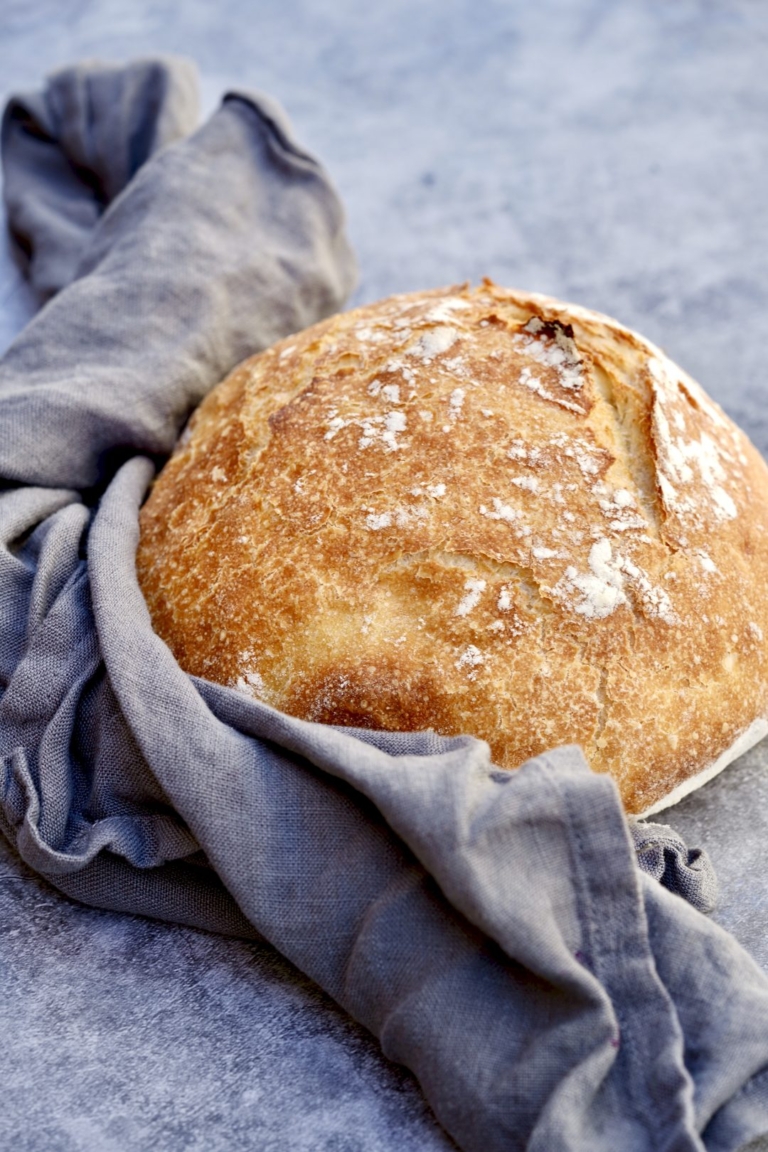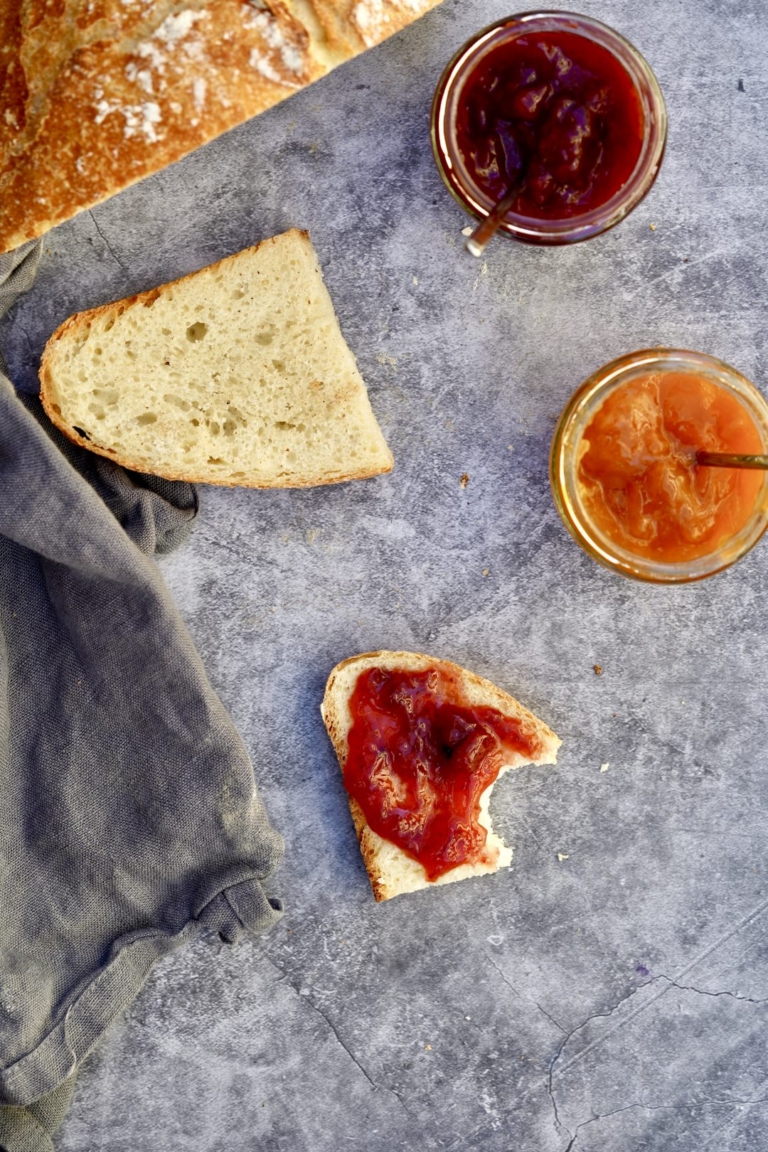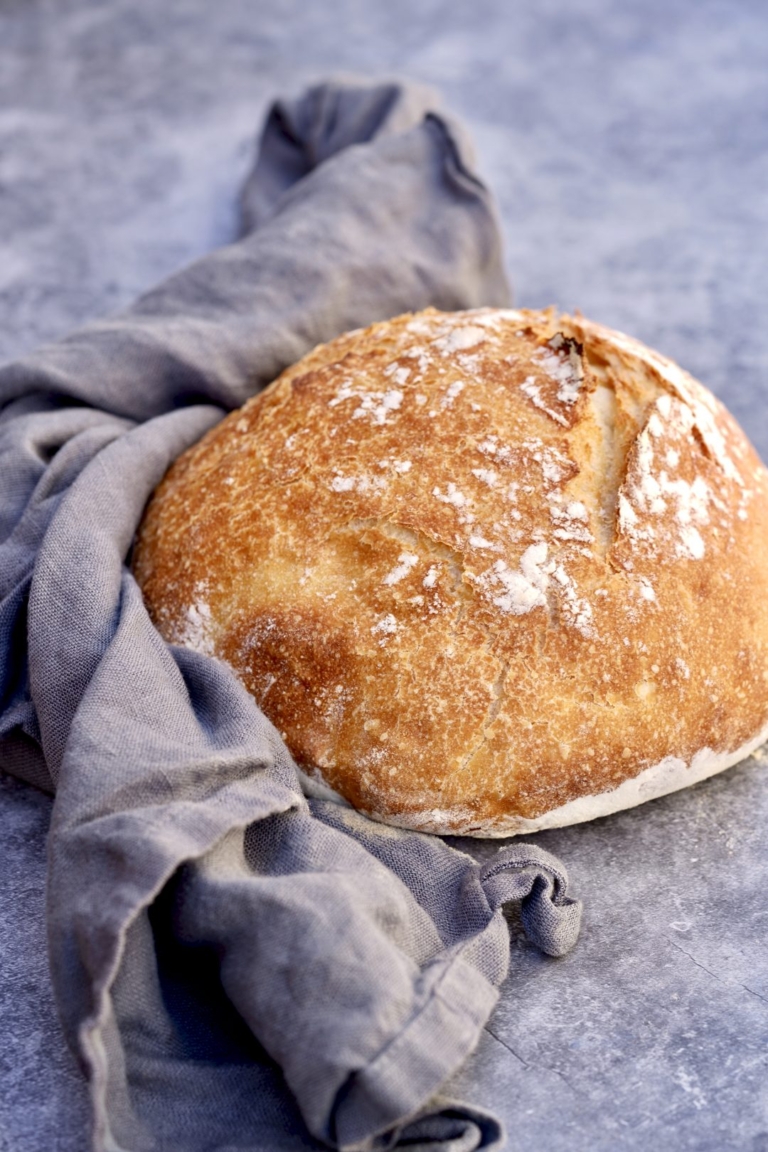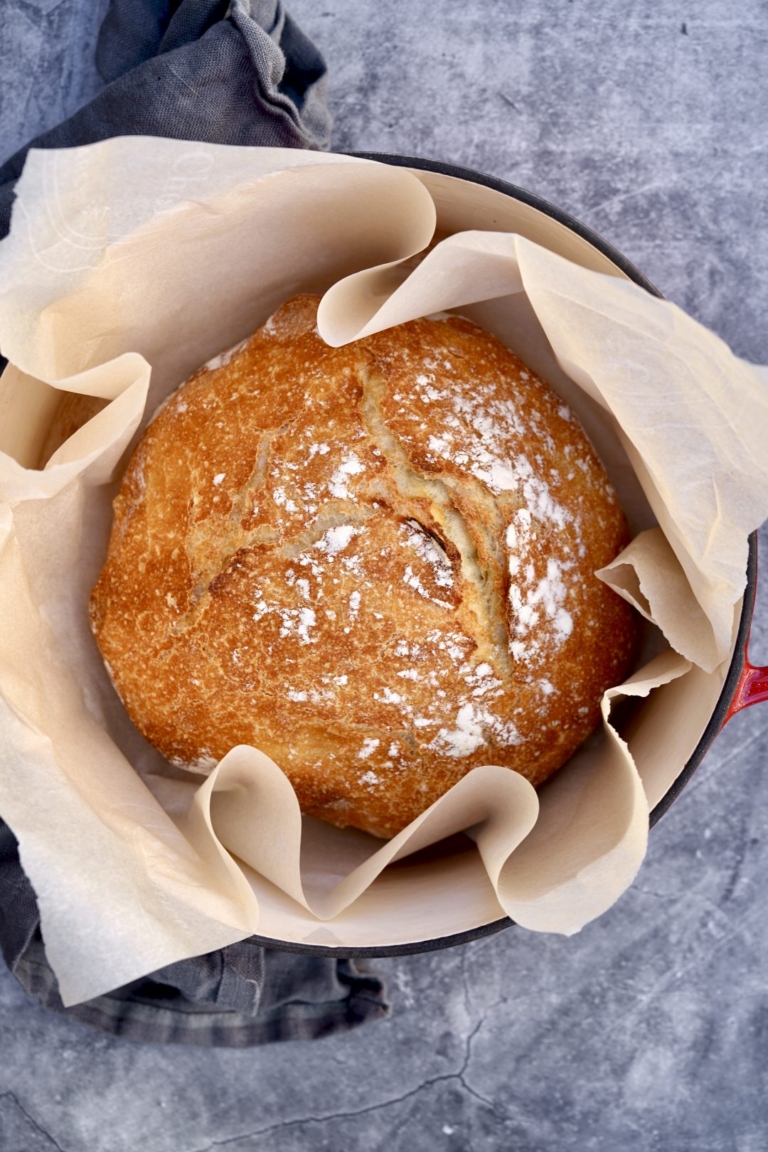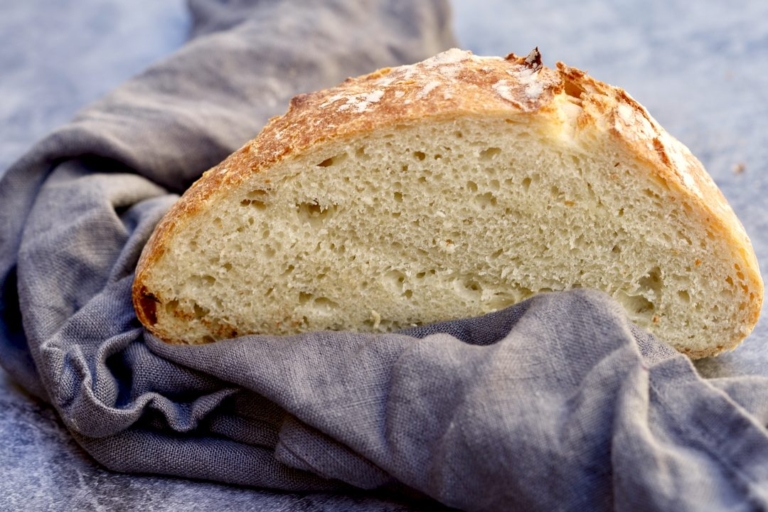Dutch Oven Bread
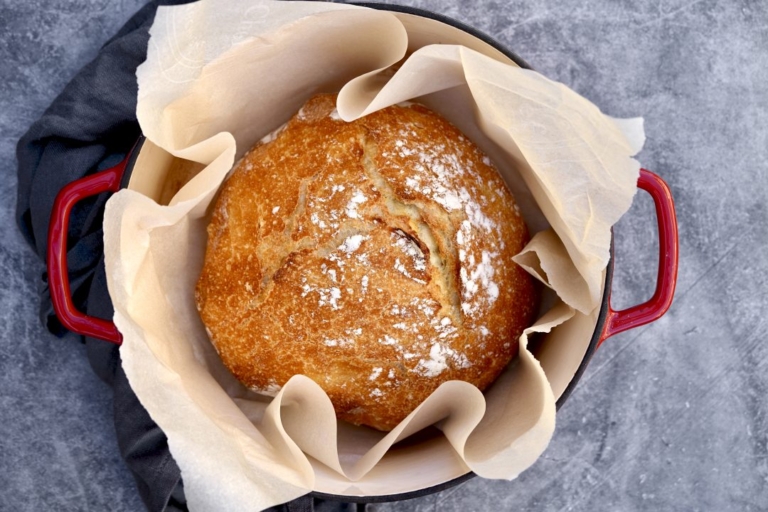
Bread, of all kinds, has been the internet darling during the COVID pandemic. I, too, fell into that rabbit hole. I have spent weeks perfecting the texture and crumb of each type of bread I tackled. This Dutch oven bread, also called no-knead bread, is one of the first easy breads I took on.
This bread recipe is considered a less labor-intensive bread recipe. With this recipe, you prep, let it rise, and bake off in a Dutch oven when you’re ready to go. The result is a fantastic, simple bread that is soft on the inside with a light, tender, almost flaky crust on the outside.
The technique used in this Dutch oven bread recipe is a no-knead method of bread baking similar to my Panettone recipe. The no-knead method uses a long fermentation (rising) time, instead of kneading, to form the gluten strands that give the bread its texture. It is characterized by a low yeast content and very wet dough. This is a vastly popular go-to bread for home cooks due to its less intimidating technique. Forgiving in nature, Dutch oven bread comes out perfectly every time.
Dutch Oven Benefits
A Dutch oven is the perfect vessel for making all kinds of artisan-style loaves. The steam that’s created inside the pot miraculously transforms the dough, ensuring the bread’s crust will shatter into delicate shards with each bite, and here’s the reason why. Unlike typical bread methods, Dutch ovens create a steamy environment for bread to bake. The results are superior lift (height) and a fantastic, crispy crust.
Most don’t realize it, but steam does a lot to improve bread as it bakes. Moisture keeps the crust from forming as quickly, which gives the bread more time to rise. It also gives the yeast more time to do its job of converting starches to simple sugars, which in turn equals more flavor. And while there are a lot of ways to steam up your oven, such as placing boiling water in a pan on the bottom rack, or spritzing water into the oven just after putting your dough in, the beauty of the Dutch oven is that the lid keeps all that steam inside.
The other thing that makes Dutch ovens great for baking is how well they hold heat. Most home ovens don’t stay at a constant temperature; they fluctuate up and down to stay around the preset temperature. (This is why recipes often have a range for baking times.) Because Dutch ovens are so thick, they retain heat well and therefore keep bread baking at a constant temperature better than thin trays and pans. Many people will ask, do you have to use a Dutch oven and the honest answer is no, any lidded pot can typically work, but a true Dutch oven will yield a moister, crisper crust bread.
Tips On How To Prevent Burning When Baking Dutch Oven Bread
- Position your oven rack to a higher setting before baking the bread, so that your dough is further from the heat source.
- Place a pizza stone or similar heavy, oven-safe item on the rack under the Dutch oven. This will shield the dough a bit from the direct heat source.
- Sprinkle cornmeal in the bottom before placing the dough inside. This can also act as a buffer between the dough and the direct heat.
So if you’re new to the bread-baking world and don’t want to invest in expensive bread pans, you can start making bread with the tools you already have and go from there.
Dutch Oven Bread
Ingredients:
- 3 cups all-purpose flour, plus more for dusting
- 2 teaspoons good quality sea salt
- 1 teaspoon Red Star active dry yeast
- 1 1/2 cups warm water (about 110 degrees F)
Directions:
- In the bowl of a kitchen mixer, such as a KitchenAid, fitted with a dough hook, add the flour, salt, and yeast, and mix to blend. With the mixer on low, slowly add the warm water and mix until a sticky dough forms.
- Lightly oil a piece of plastic wrap and cover the bowl tightly. Set the bowl in a warm place and allow to rise for a minimum of 8 hours (or up to 12). You will know when the dough is ready when bubbles have formed, and the top begins to flatten out.
- Preheat the oven to 450 degrees F. Once the oven is preheated, place a 6-quart Dutch oven (and cover) in the oven and allow to heat for 30 minutes.
- Place a large piece of parchment paper near your work station. Sprinkle a generous amount of flour on the parchment paper.
- Once the dough has risen and the Dutch oven has been preheated, gently punch down the dough. With well-floured hands, shape the dough into a smooth ball. Place the dough in the center of the parchment paper and sprinkle the top lightly with flour. Top with a sheet of lightly oiled plastic wrap and allow to rest for 30 minutes.
- Carefully remove the hot Dutch oven from the oven. Remove the plastic wrap and place the parchment paper and dough directly into the Dutch oven. Be careful not to burn yourself! Cover the Dutch oven and return it to the oven.
- Bake the bread, covered, for 45-50 minutes until baked through and golden brown on top. Remove the Dutch oven from the oven and carefully remove the bread. Place on a cooling wrack and allow to cool completely before slicing.

